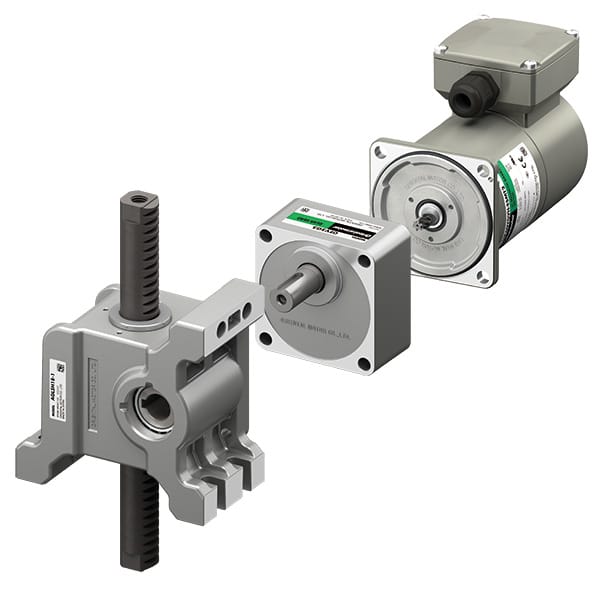NEWS: Rotero has a new supplier
NEWS: Rotero has a new supplier
Discover the benefits of our rack and pinion mechanisms, an innovative mechanical drive system that converts rotary motion into precise linear motion. These systems offer high power transmission, excellent accuracy and are ideal for various applications, from CNC machines to automatic gates. With their robust design and minimal maintenance requirement, rack and pinion mechanisms are a reliable choice for industrial environments that rely on efficiency and precision.
A rack and pinion is a mechanical system that converts rotary motion into linear motion. The system consists of a gear and a linear rail with teeth, the rack. The teeth of the gear engage with the teeth of the rack. When the gear rotates, the interaction between the teeth causes the rack to move in a straight line. This system is particularly useful in applications where powerful and precise linear movements are required, such as in CNC machines, gate drives, lifting and hoisting systems and industrial automation.
There are different types of rack and pinion mechanism, designed in various ways to meet specific requirements. Common types include straight rack and pinion mechanisms, helical rack and pinion mechanisms and rack and pinion mechanisms with different tooth configurations. Each type has unique features and benefits that make it suitable for specific applications.
One of the main features of rack and pinion mechanisms is their high power transmission. Due to the mechanical interaction between the teeth of the gear and the rack, the system can handle large forces, making it highly suitable for heavy industrial applications. The firm grip between the teeth ensures that there is hardly any slip, so the movement is extremely precise and reliable.
Rack and pinion mechanisms also offer good accuracy and repeatability when converting rotary movement into linear movement. The gears and the rack are designed so that the teeth engage precisely, ensuring consistent and accurate movement without backlash. Moreover, rack and pinion mechanisms can cover long linear distances, as they can be easily extended by connecting multiple racks together.
Because rack and pinion mechanisms are relatively simple, they are easy to maintain and repair in industrial applications. Due to the robust construction of the system, which is often made of hardened steel or other durable materials, it is resistant to high sustained loads, shock loads and wear.
Rack and pinion mechanisms are used in numerous sectors, including CNC machines, automatic gates, industrial robotics, lifting systems and packaging machines. In CNC machines, rack and pinion mechanisms move tools or workpieces accurately and with great force. In automatic sliding gates, rack and pinion mechanisms are used to slide the door open and closed, driven by a motor that rotates the gear. In robotics, rack and pinion mechanisms are used to move arms or grippers along a linear path. In lifting and hoisting systems, rack and pinion mechanisms can be used to move heavy loads up or down.
Rack and pinion mechanisms do not have a self-braking effect, meaning that when the power source is not active, the rack can move freely if a force is applied. This can be problematic in situations where the load needs to be held without the motor running. However, external brakes or locking systems can be used to immobilise the rack when necessary.
Additionally, rack and pinion mechanisms are relatively low-maintenance systems. Periodic lubrication of the gears and the rack can help minimise wear and keep the movement smooth. Due to the absence of belts or chains that can stretch or break, rack and pinion mechanisms offer higher reliability and require less frequent maintenance. This makes rack and pinion mechanisms an ideal choice for demanding industrial environments where reliability and accuracy are of great importance.


With these cookies, we and third parties can collect information about you and your internet behaviour, both within and outside our website. Based on this, we and third parties adjust the website, our communication, and advertisements to your interests and profile. You can read more information in our cookie statement.
If you opt for acceptance, we will place all cookies. If you opt for rejection, we will only place functional and analytical cookies. You can adjust your preferences at a later time.
With these cookies, we and third parties can collect information about you and your internet behaviour, both within and outside our website. Based on this, we and third parties adjust the website, our communication, and advertisements to your interests and profile. You can read more information in our cookie statement.
Functional cookies are essential for the proper functioning of our website. They allow us to enable basic functions such as page navigation and access to secure areas. These cookies do not collect personal information and cannot be disabled.
Analytical cookies help us gain insight into how visitors use our website. We collect anonymised data about page interactions and navigation, enabling us to continuously improve our site.
Marketing cookies are used to track visitors when they visit different websites. The goal is to display relevant advertisements to the individual user. By allowing these cookies, you help us show you relevant content and offers.